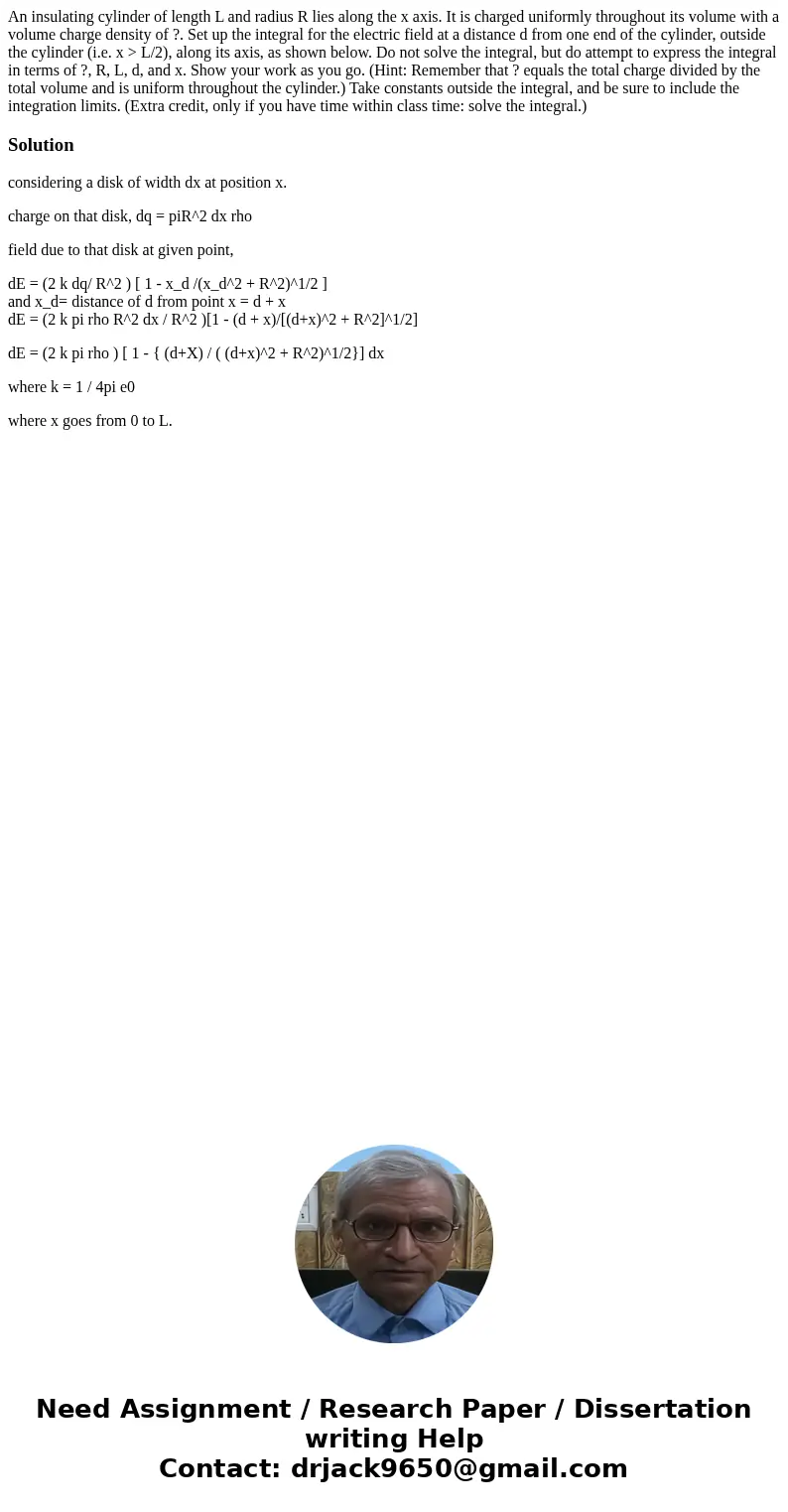An insulating cylinder of length L and radius R lies along t
An insulating cylinder of length L and radius R lies along the x axis. It is charged uniformly throughout its volume with a volume charge density of ?. Set up the integral for the electric field at a distance d from one end of the cylinder, outside the cylinder (i.e. x > L/2), along its axis, as shown below. Do not solve the integral, but do attempt to express the integral in terms of ?, R, L, d, and x. Show your work as you go. (Hint: Remember that ? equals the total charge divided by the total volume and is uniform throughout the cylinder.) Take constants outside the integral, and be sure to include the integration limits. (Extra credit, only if you have time within class time: solve the integral.)
Solution
considering a disk of width dx at position x.
charge on that disk, dq = piR^2 dx rho
field due to that disk at given point,
dE = (2 k dq/ R^2 ) [ 1 - x_d /(x_d^2 + R^2)^1/2 ]
and x_d= distance of d from point x = d + x
dE = (2 k pi rho R^2 dx / R^2 )[1 - (d + x)/[(d+x)^2 + R^2]^1/2]
dE = (2 k pi rho ) [ 1 - { (d+X) / ( (d+x)^2 + R^2)^1/2}] dx
where k = 1 / 4pi e0
where x goes from 0 to L.

 Homework Sourse
Homework Sourse